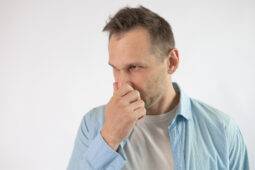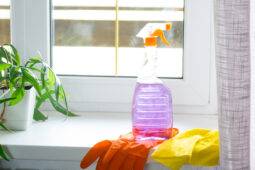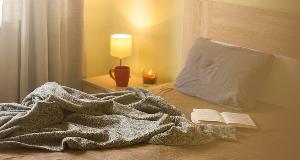Don’t Use Bleach To Clean These 8 Common Surfaces
Bleach feels like the final boss of cleaning products. It’s strong, reliable, and great for disinfecting. But it’s also a little too powerful for many surfaces around the house. In some cases, it doesn’t just fail to clean well, it can actually cause damage that you can’t undo. Knowing where bleach doesn’t belong can save you money, frustration, and stop you from making an expensive mistake. Let’s walk through the spots that bleach should never, ever be used to clean.
Natural Stone Countertops

Stone is tough, but bleach can slowly eat away at its protective seal. Over time, as the seal gets thinner, bleach dulls the finish and leaves the stone looking tired. Granite, marble, and quartz all prefer gentler cleaners like soap and water. It feels backwards since stone seems indestructible, but trust me, bleach slowly ruins it. A mild cleaner helps the surface keep its shine for far longer without damaging your investment.
Hardwood Floors

Bleach and wood do not get along. It seeps into the grain, strips color, and weakens the finish. Even diluted bleach can leave light patches and rough spots. Wood floors look their best when cleaned with mild, wood-safe cleaners that protect their finish rather than eating into it. If you want your floors to stay warm and beautiful, keep bleach far away from them.
Stainless Steel Appliances

You might think bleach is fine on tough metals, but stainless steel actually stains and corrodes when exposed to strong chemicals. Instead of the shine you want, you’ll get cloudy marks or rusty-looking spots. Stainless steel prefers microfiber cloths and either mild cleaners or vinegar. A simple wipe makes it shine without risk of damaging the finish. Bleach, on the other hand, quietly destroys that beautiful shine.
Fabric Upholstery

A bleach spill on fabric is basically a disaster. Bleach works to lighten stains because it removes dye entirely, leaving uneven patches you can’t fix. Even small splashes cause permanent spots. Upholstery is best cleaned with gentle, fabric-safe solutions, or even just warm water and dish soap. When in doubt, test a hidden area before putting the cleaner all over upholstery. Better safe than sorry.
Leather Furniture

Bleach dries leather out so badly that it can crack, stiffen, or change color. It strips away the natural oils that give leather its soft, supple feel. A leather-safe cleaner or simple damp cloth is all you need for everyday messes. If you properly condition the leather every once in a while, it will last years longer. But bleach is one of the fastest ways to ruin a leather piece you love.
Colored Clothing

Most people know bleach ruins colored fabrics, yet it’s tempting to reach for it when stains get bad. Unfortunately, even a small amount can fade or spot-damage clothing. The fix is to go with color-safe bleach or oxygen-based cleaners, which lift stains without stripping dye. It’s amazing how many garments can be saved with the right cleaner, and how many get ruined with the wrong one.
Copper Or Brass Fixtures

Bleach reacts badly with metals like copper or brass, causing discoloration and tarnish. Instead of a warm, glowing finish, you get a dull, spotty surface. Instead, to clean these metals, only give them a gentle polishing and stick to mild cleaners. With a little care, they keep their shine easily. Bleach just speeds up corrosion and thales away the character that makes these fixtures so beautiful in the first place.
Anything With Ammonia

Mixing bleach with ammonia is dangerous. It creates toxic fumes that can make you seriously sick very quickly. Many glass cleaners, bathroom sprays, and even some multi-purpose cleaners contain ammonia. If you’re not sure, don’t mix products or layer them after bleach on the same surface. It’s always safer to clean with one product at a time, especially when bleach is involved.
Related Articles
-The Scary Reason Why You Should Never Mix Bleach With These Three Things
-Don't Use Disinfectant Wipes To Clean These 9 Things
-Glass Stove-top Cleaning Mistakes You Don't Want To Make
Bleach has its uses, but it’s not the universal cleaner we wish it were sometimes. Treat it like a specialty product, not an everyday go-to. By knowing where it doesn’t belong, you protect the surfaces you love and keep your home cleaner in the long run. Sometimes the strongest cleaner isn’t the smartest choice, and going with a gentler option often gets you better results with fewer regrets.









